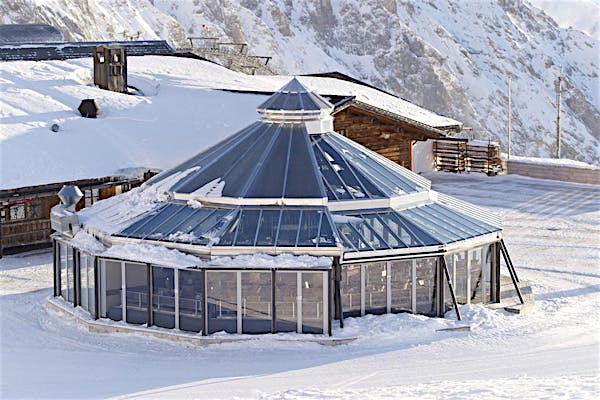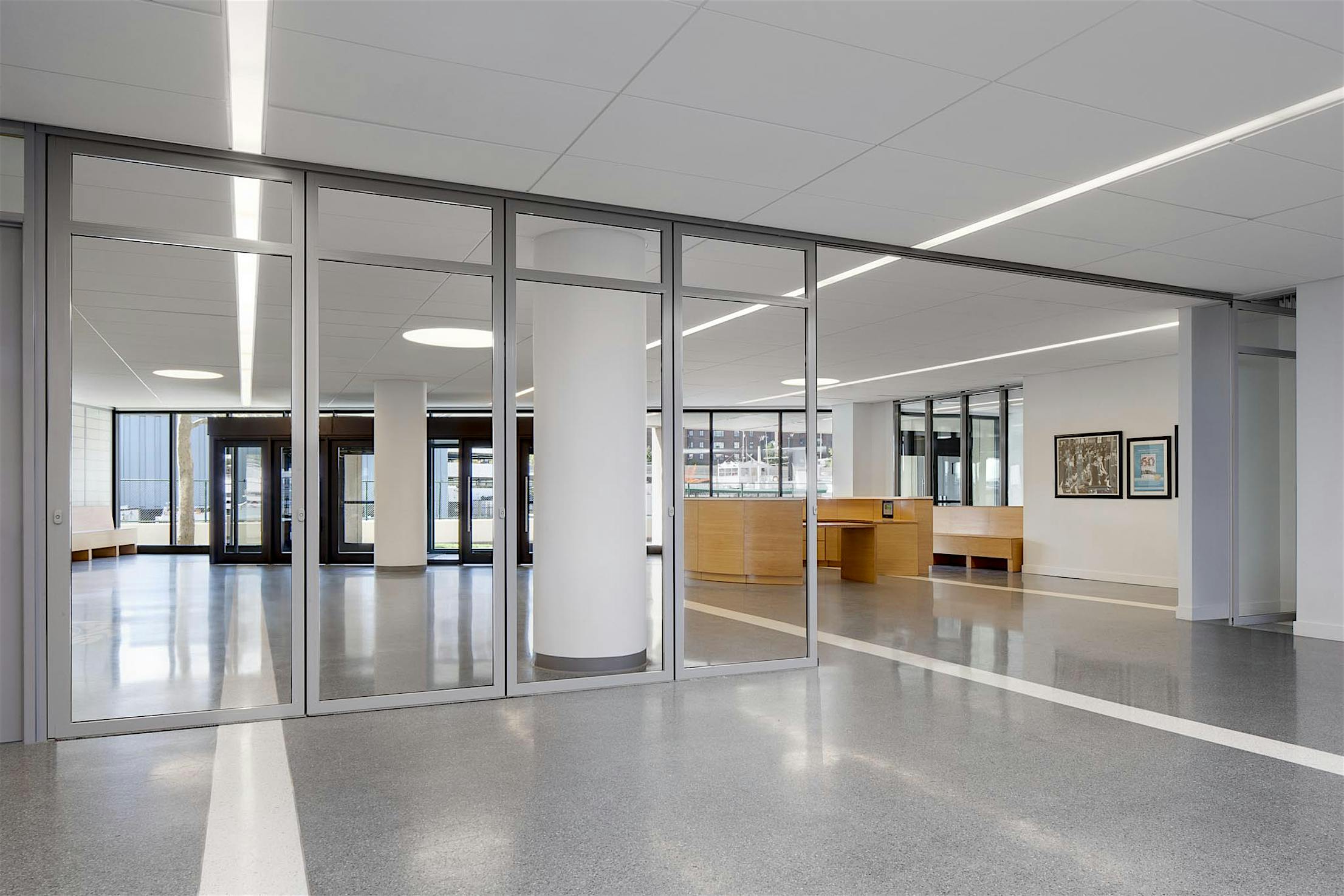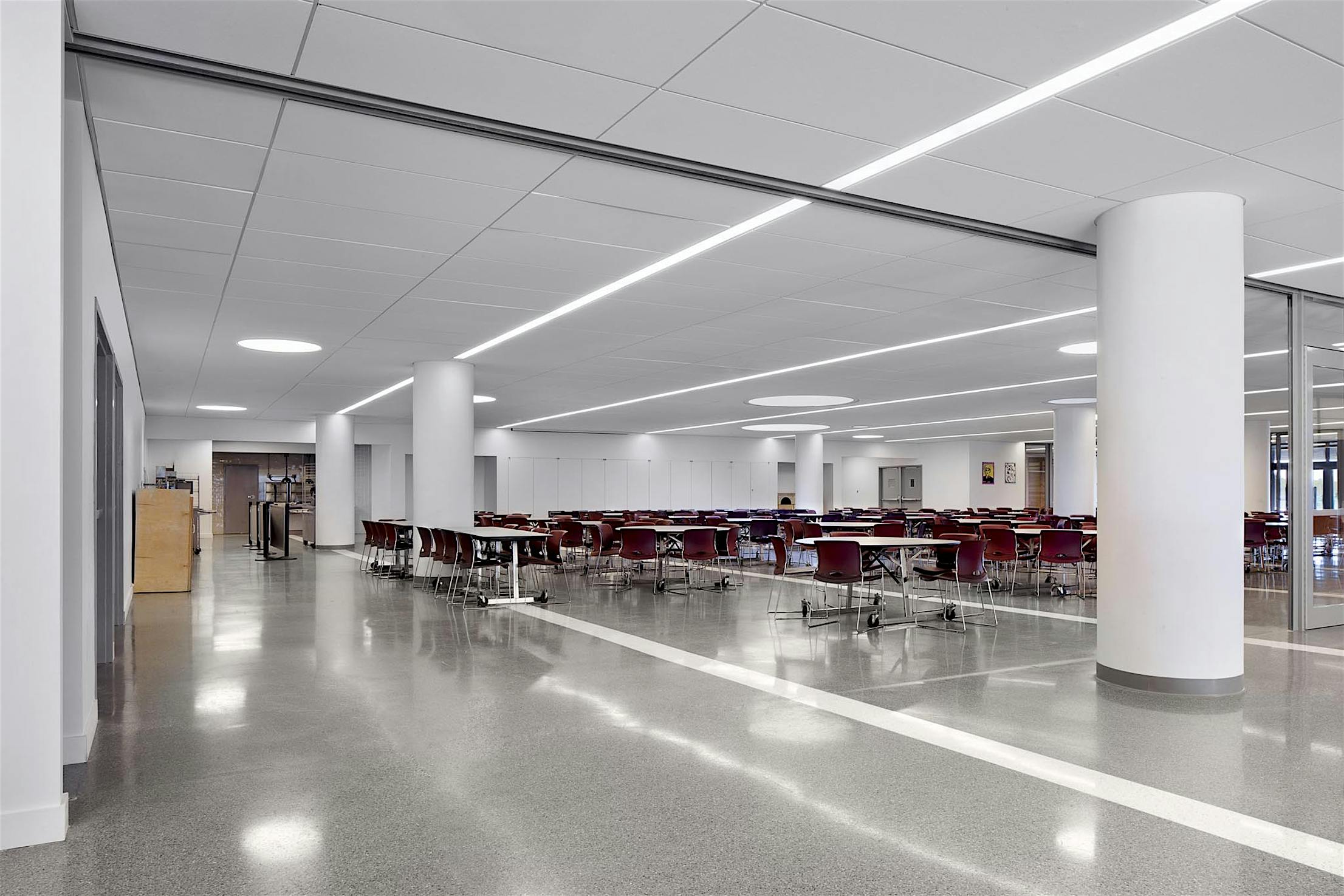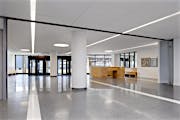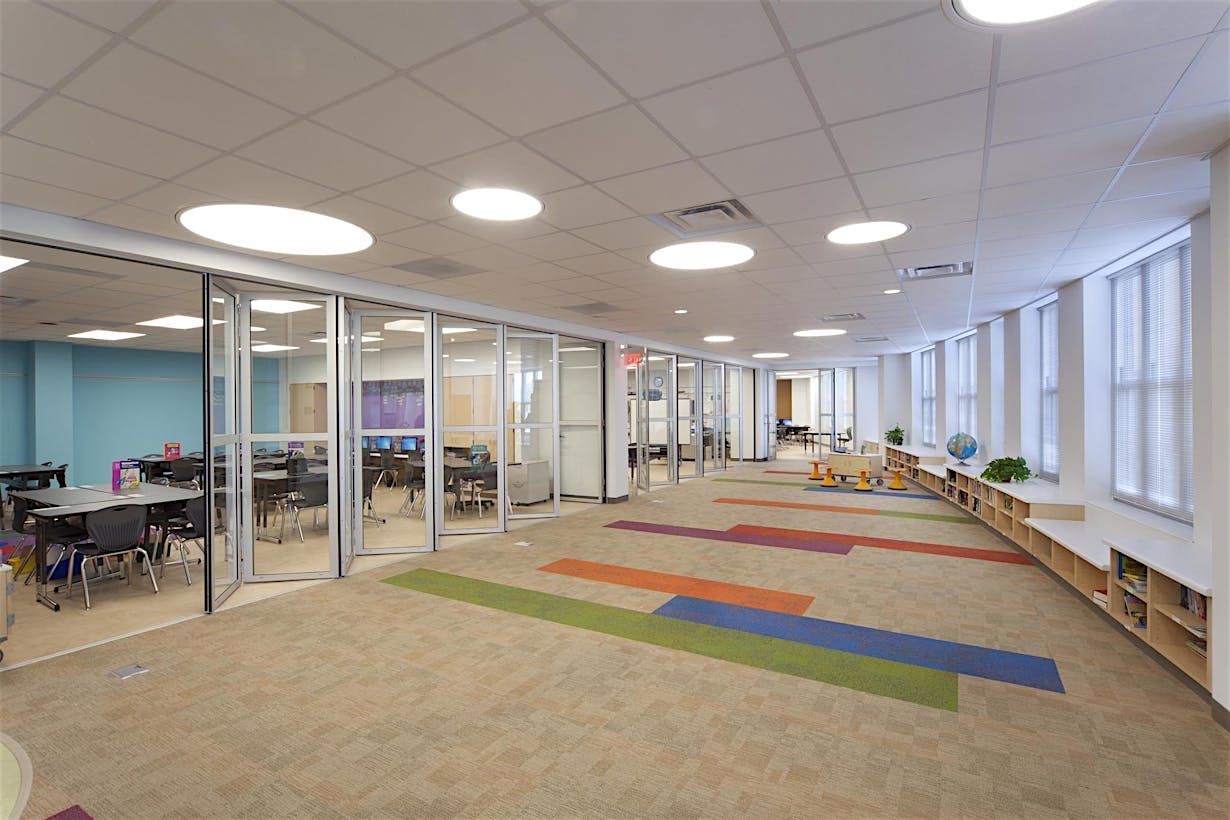The United Nations International School, a K-12 facility built in the early 1970s, boasted unique advantages and suffered equally unique failings, many of which are tied to the structure's location on New York City's East River.
The New York office of Skidmore, Owings & Merrill (SOM) was engaged to design a renovation and expansion of the structure in 2008. The school needed the renovation to provide a new theater, cafeteria, gymnasium and a suitably distinguished front entrance. Overall, SOM was tasked to use their architectural ideas to encourage academic excellence within a close-knit community, while accenting the campus, its location and views.



